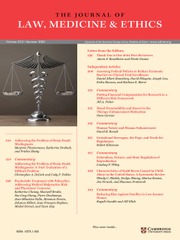Article contents
Adaptation of Animal and Human Health Surveillance Systems for Vector-Borne Diseases Accompanying Climate Change
Published online by Cambridge University Press: 27 January 2021
Abstract
Anthropogenic climate change is causing temperature rise in temperate zones resulting in climate conditions more similar to subtropical zones. As a result, rising temperatures increase the range of disease-carrying insects to new areas outside of subtropical zones, and increased precipitation causes flooding that is more hospitable for vector breeding. State governments, the federal government, and governmental agencies, like the Animal and Plant Health Inspection Service (APHIS) of USDA and the National Notifiable Disease Surveillance System (NNDSS) of the U.S. Centers for Disease Control and Prevention, lack a coordinated plan for vector-borne disease accompanying climate change. APHIS focuses its surveillance primarily on the effect of illness on agricultural production, while NNDSS focuses on the emergence of pathogens affecting human health. This article provides an analysis of the current framework of surveillance of, and response to, vector-borne infectious diseases, the impacts of climate change on the spread of vector-borne infectious diseases, and recommends changes to federal law to address these threats.
- Type
- Symposium Articles
- Information
- Copyright
- Copyright © American Society of Law, Medicine and Ethics 2020
References
- 3
- Cited by




